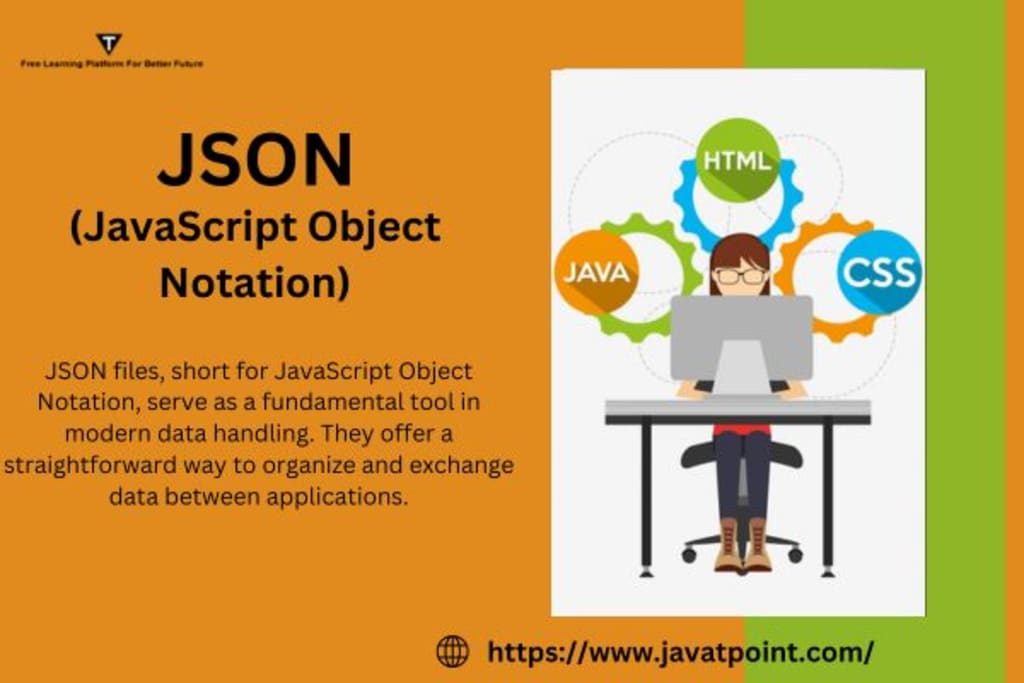
JSON files, short for JavaScript Object Notation, serve as a fundamental tool in modern data handling. They offer a straightforward way to organize and exchange data between applications.
A typical JSON file example might include key-value pairs, representing various attributes. For instance, "name": "John Doe", "age": 30, etc. Platforms like JavaTpoint provide extensive resources for learning and mastering JSON manipulation.
Despite its simplicity, JSON boasts remarkable versatility, finding utility in areas like web development, configuration files, and API responses, making it an indispensable component of the digital landscape.
What is JSON?
JSON, or JavaScript Object Notation, is a lightweight data interchange format used for transmitting and storing structured data.
It employs a simple, easy-to-read syntax consisting of key-value pairs enclosed in curly braces. JSON files facilitate seamless data exchange between different systems and platforms, making them a cornerstone of modern software development.
For instance, a JSON file example might include data representing a person's name, age, and hobbies.
Websites like JavaTpoint offer comprehensive tutorials on JSON, helping developers understand its syntax and usage effectively.
Structure of JSON Files
JSON files have a simple structure consisting of key-value pairs enclosed in curly braces `{}`. Keys and values are separated by a colon `:`, and key-value pairs are separated by commas. Arrays are ordered lists of values enclosed in square brackets `[]`. Objects are collections of key-value pairs enclosed in curly braces `{}`.
Example:
{
"name": "John Doe",
"age": 30,
"is_student": false,
"hobbies": ["reading", "coding", "traveling"],
"address": {
"city": "New York",
"country": "USA"
}
}
Common Use Cases

JSON Files find common use cases in data exchange between web servers and clients, as demonstrated by JSON file examples on platforms like Javatpoint.
They are also popular for configuration settings, logging structured data, and storing information in NoSQL databases, showcasing JSON's versatility and broad applicability.
1. Data Exchange
JSON is widely used for exchanging data between a server and a web client. APIs often return JSON responses because of its lightweight nature and ease of parsing in web applications.
2. Configuration Files
Many applications use JSON files to store configuration settings due to their human-readable format and ease of manipulation.
3. Logging
JSON is often used for logging structured data in applications. Each log entry can be represented as a JSON object, making it easy to search and analyze logs.
4. NoSQL Databases
JSON is a common format for storing data in NoSQL databases like MongoDB. Its flexible schema allows for easy storage and retrieval of complex data structures.
5. Serialization
JSON is used for serializing and deserializing objects in many programming languages. It allows objects to be converted into a string representation that can be stored or transmitted over a network.
Advantages of JSON
JSON offers several advantages in modern data exchange and storage. Its readability and simplicity make it ideal for representing complex data structures.
JSON files, like the example provided on a website like JavaTpoint, ensure interoperability across various platforms, facilitating seamless communication between systems and developers.
1. Readability
JSON files are easy for humans to read and write, making them a popular choice for configuration files and data interchange.
2. Interoperability
JSON is supported by most programming languages and platforms, making it an ideal choice for cross-platform development.
3. Lightweight
JSON files are lightweight and have a simple structure, making them efficient for data transmission over networks.
4. Flexible
JSON's flexible schema allows for easy representation of complex data structures without the need for predefined schemas.
Limitations of JSON

JSON, despite its popularity, has limitations. It lacks support for comments, making it challenging to annotate code. Moreover, it can't handle binary data directly, and its data type support is limited.
For instance, a JSON File example from JavaTpoint may encounter difficulties with dates or binary data.
1. No Comments
JSON does not support comments, which can make it challenging to add explanatory notes within the data.
2. No Support for Binary Data
JSON is designed for representing textual data and does not support binary data directly.
3. Limited Data Types
JSON supports only a limited set of data types, such as strings, numbers, booleans, arrays, and objects. Complex data types like dates or binary data need to be handled separately.
Conclusion
JSON files stand as a cornerstone in modern data exchange and storage, offering a lightweight and versatile format for developers worldwide.
Through its simple structure of key-value pairs and broad support across platforms and programming languages, JSON facilitates seamless data interchange, configuration, and serialization tasks.
For instance, a JSON file example, like the one showcased earlier, illustrates its readability and flexibility.
Resources like JavaTpoint provide comprehensive guides and tutorials for mastering JSON's usage, ensuring developers can harness its power effectively in their projects, thereby fostering efficient communication and collaboration in the digital realm.





Comments
There are no comments for this story
Be the first to respond and start the conversation.